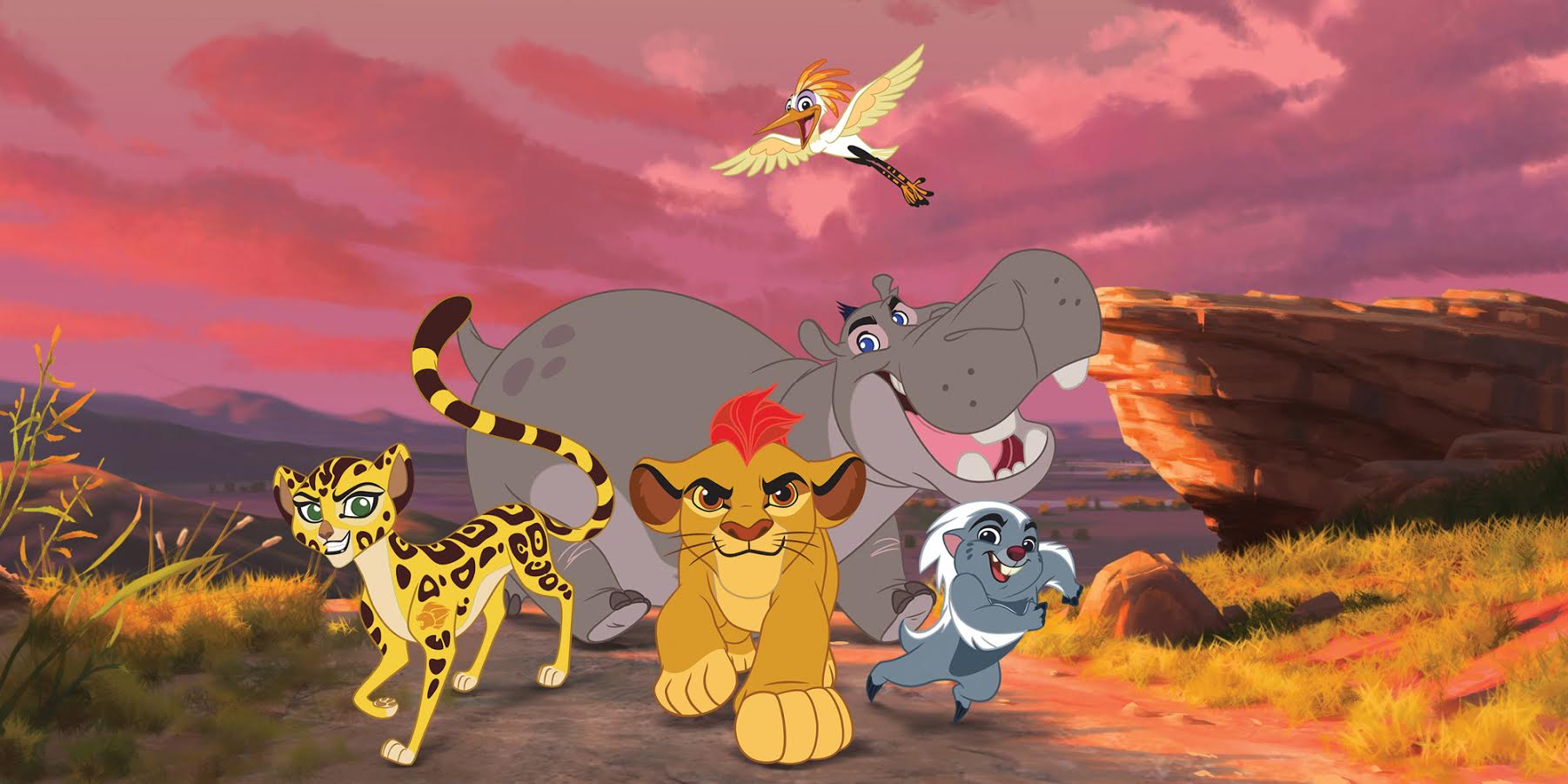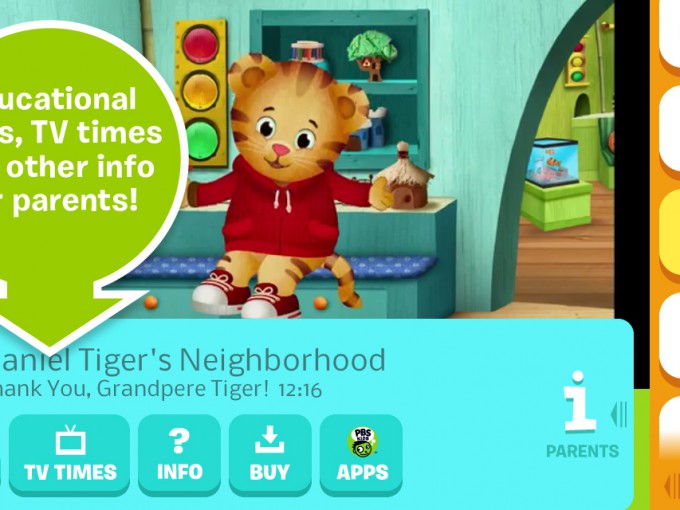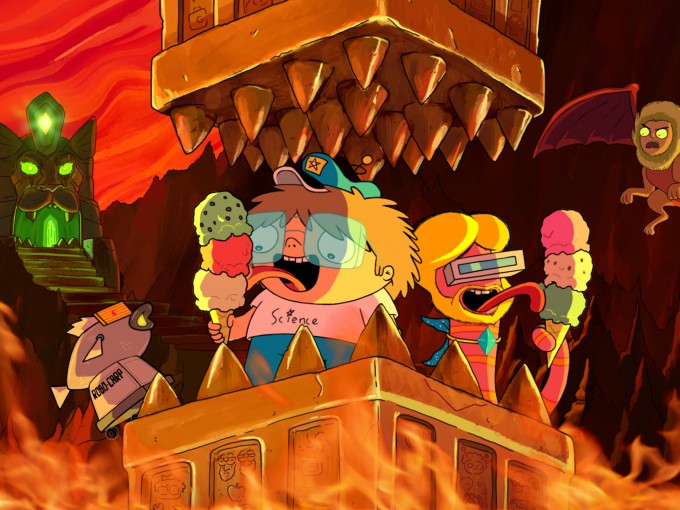“TV is far from dead,” says Brian Hughes, SVP of audience intelligence and strategy for New York Magna Global, a media data company. In fact, he says that when you take the long view, a complete shift away from traditional TV-watching has not materialized at the rate some experts had predicted. “TV viewing seemed to peak about seven years ago,” he contends. “We have seen a decline since then, but over the last two years, that decline has slowed dramatically.”
And there are plenty of other stats that back up linear broadcasting’s continued presence and importance, especially with younger demographics. According to Nielsen’s The Total Audience Report, US kids two to 11 spend more than 22 hours a week watching live TV and DVR/time-shifted TV,
compared to around three hours a week on a game console, or one hour a week on a multimedia device like an iPad.
However, positive statistics still have to be weighed against major structural challenges that are facing traditional networks.
“We are expecting MVPDs (multichannel video programming distributors) to lose about 1% of subscribers a year for the next few years,” says Hughes. “But that might be a small number compared to the Cord Never cohort, those who are entering the market and have never purchased a MVPD and go right to some sort of internet solution.”
Despite this long-term trend of declining TV ratings, Vincent Letang, EVP and director of global forecasting at New York-based Magna Global, believes linear nets have some cause for optimism. He closely follows advertising spend and confirms that 2016’s US network upfronts generated more dollars than many expected. He attributed the rise in spend to a number of factors.
Foremost, short-term or scatter market rates grew substantially through 2015. Advertisers that had not locked into long-term contracts at the beginning of last year, ended up paying more for short-term commitments as the market quickly adjusted to a stronger than expected ratings period, which pushed additional dollars into the 2016 upfronts.
Christopher Vollmer, global managing director of digital services at Strategy& (PwC’s New York-based media consulting firm), says another reason for the increase in upfront dollars is that larger advertisers in some of kids TVs biggest categories have been less than satisfied with the return on their investment in digital. “There are real concerns about the quality of traffic and the impact of ad-blocking technology,” he says.
Linear delivers the mass market
Another key factor slowing down the decline of traditional networks’ share of advertising dollars is linear’s broad-spectrum appeal. Letang points to the example of big movie campaigns. While many major movie studios were early champions of viral campaigns and digital spending, he says linear remains the best “surefire” route to alerting a mass audience to the launch of a tentpole movie.
“On Thursday night, when they need to reach everyone in the country before the movie opens on Friday, linear is still the play,” says Letang. “For all the strength and growth in digital, you need national TV to achieve that mass audience.”
Rita Ferro, EVP of media sales and marketing at Disney Channels Worldwide, indicates that the net is far from giving short shrift to their linear business. “We don’t see linear as dead,” she says, citing an 11% increase in Disney’s investment in traditional linear broadcast content over the past year. “It will continue to have a place in the marketplace,” she adds, confirming that linear still delivers co-viewing numbers in a way that OTT options simply cannot.
“We know from our research that when kids are watching linear, it’s with a sibling or a parent,” she says. “That’s great, because then we can talk to our partners about broader opportunities around those demographics.” In short, Ferro asserts that linear is still the king of co-viewing. “Linear and broad demographics go hand-in-hand,” she contends.
PBS expands broadcast plans
The continued resonance of linear TV is also peeking out from behind the curtains of PBS KIDS’ announcement of a new 24/7 service. The new offering will be available through PBS’s cable partners and via over-the-air broadcast stations. In addition, it will be live-streamed on the PBS KIDS app. Set to launch this fall, the new service is a clear sign that PBS views linear broadcast not as a relic of the past, but as a valuable platform that will survive and evolve alongside its digital extensions.
“It will allow us to fill the gaps,” says Lesli Rotenberg, SVP and GM of children’s media and education at PBS. She says the broadcaster’s research shows that disadvantaged households rely more on linear transmissions, including over-the-air TV and cable packages, to a greater extent than more affluent ones.
“We know that 68% of TV viewing weekly takes place on live TV,” says Rotenberg. “We know that a lot of families rely on it. They spend the most time with broadcast TV.”
The new 24/7 service will feature content from the PBS KIDS catalog, including Daniel Tiger’s Neighborhood, Splash and Bubbles, Ready Jet Go! and Wild Kratts.
PBS has already had great success with its digital app—serving up an astounding five billion streams a year. Its new live-stream capability will further extend viewers’ experience with PBS KIDS. Following the initial launch, PBS plans to give users of the mobile platform the ability to seamlessly toggle between the live-stream content and the app’s digital games.
“We are really pioneering it,” says Rotenberg. “We have learned from our research that kids get the most out of content when they can multitask with it. No one has fully integrated the experiences yet.” The cohesive approach is a hallmark of PBS KIDS’ strategy to continue supporting linear distribution while simultaneously innovating in the digital space.
“We don’t consider ourselves competing with OTT, or necessarily as a linear network,” says Rotenberg. “We are a public media company, and while broadcast is a huge part of our strategy, it is one part, as are OTT platforms and our own digital app.”
Event TV and the rise of e-sports
The increased competition for, and fragmentation of, the kids audience has also propelled the popularity of event broadcasts in the linear space. Right now, the majority of kids content is not specific to time and space. VOD is the rule, rather than the exception. Kids have the ability to summon the shows they want to view, whenever they want on any number of screens, which has placed a premium on event television—content watched and experienced by an audience in real time. Today, event broadcasts offer something novel to audiences and can also be augmented and amplified in real time by social media platforms like Facebook, Twitter and Snapchat.

Sports-oriented events TV like Nickelodeon’s Kids’ Choice Sports Awards is becoming a priority for US kidsnets
North America’s major sporting organizations have all benefited from these conditions. The ratings live events can command are as impressive as the billions of dollars that networks pay for broadcasting rights to major sports leagues. For example, Fox pays about US$500 million a year for Major League Baseball and reportedly more than US$3 billion a year for National Football League games.
The growing prominence of sports and event TV has not gone unnoticed by the major players in the kids market. But with traditional North American sports leagues’ content spoken for, kidnets are looking elsewhere for event TV and sports content.
Enter competitive video gaming. It has come a long way in a very short time. Just a few years ago, only a small subset of highly engaged gamers were aware of the e-sports phenomenon. Today, it has attracted interest from major kids players like Disney and Cartoon Network.
According to Amsterdam-based Newzoo, a gaming intelligence company, revenue for the global e-sports market is expected to rise to US$463 million in 2016, compared to US$325 million in 2015. By 2019, some experts have predicted that the sector could cross the billion-dollar threshold. ”Video gaming overall, and e-sports specifically, is an exciting source of new content.” says analyst Vollmer. “Disney appears to be experimenting with e-sports at both Disney XD and through ESPN, a company they own.”
So far, Disney XD has teamed up with videogame maker Nintendo for two original e-sports programs, including Clash of Karts: Mario Kart 8, which aired last December, and Nintendo World Championship, which bowed on Disney XD last October. ESPN, the global sports network owned by Disney, also launched an e-sports vertical earlier this year.
Disney execs would not comment on their strategy for, or the importance of, e-sports in their future offerings. But meanwhile, Cartoon Network has gotten into the game, too. The network streamed Let’s Play Flooping Card Wars!, a card tournament featuring a game based on its hit animated series Adventure Time. The event aired on Twitch, Amazon’s e-sports OTT channel, this summer. After the live event, fans were able to access tournament footage and commentary on Cartoon Network’s YouTube channels.
Viacom’s Nickelodeon has also invested more time and resources into sports in the past couple of years and will continue to do so in the future. In terms of live events, Nick can boast the annual Kids’ Choice Sports Awards—an Oscars-like ceremony that draws blue-chip sports celebrities such as host Russell Wilson and NBA star Stephen Curry for a live mid-summer broadcast. Additionally, the net continues to invest in sports-related live-action content such as Jagger Eaton’s Mega Life, a series that follows the sports adventures of a real-life skateboarding star, as well as other live-action series that leverage NFL players like Rob Gronkowski (Crashlete) and Cam Newton (All In with Cam Newton).
“We aren’t trying to be the next ESPN,” says Bronwen O’Keefe, SVP of development and production at Nickelodeon. “But we have the intention to be in the sports world.” The network knows there is an appetite for sports with its target demo. “We are giving our audience the sports content that is meaningful to them through a kids lens,” says O’Keefe. “We are answering a need that our audience has expressed.”
A short-form video explosion
Rule number one for any broadcaster is to give its audience what it wants, and for kidsnets lately that means short-form video. “With linear channels facing competition from not just streaming services, but also video games and social media, the players have been gradually expanding their efforts in digital—especially new content experiences like short-form video,” says media analyst Vollmer.
The big three, Nickelodeon, Disney and Cartoon Network, are increasingly using their power and resources to create new short-form content while employing their wide reach and iconic brands to entice a new class of creators. The resulting content is readily being distributed through the nets’ own apps, as well as traditional broadcasts, third-party OTTs and social media.
“Disney has prioritized short-form video production,” says Vollmer. So the introduction of the Disney LOL app, a micro-content platform released earlier this summer, would seem to confirm his point. According to Disney, the app attracted more than 200 million engagements just a few weeks after its launch. “The app gives consumers what they want,” says Ferro. “The content is very fast—and sticky.” And its rollout is proof positive that the most powerful entertainment business in the world has recognized the power of bite-sized content.
Another high-profile Disney investment in short-form content is Descendants: Wicked World, a cycle of 18 two-to-three minute animated shorts that inhabit the universe of Disney original live-action movie Descendants. (It was a huge hit for the net in 2015.) Familiar characters and storylines are drawn upon with the aim bridging the gap from the first movie to the upcoming sequel, which is set to launch in 2017.
“The film leaves off, and Wicked World picks up,” explains Paul DeBenedittis, SVP of programming strategy at Disney Channels Worldwide. Wicked World is distributed through Disney Channel and its digital platforms like its branded YouTube Channel that currently has more than 300,000 subscribers. According to DeBenedittis, the series reached an estimated 30 million viewers and attracted more than 100 million engagements. In fact, it has been so successful that a second cycle of 15 episodes will be ready to bow this fall.
Cartoon Network has also reaped the benefits of short-form video with its series Mighty Magiswords. “It’s no longer enough to launch a show on linear and build short-form content digitally to support it,” says Christina Miller, president and general manager of Cartoon Network, Adult Swim and Boomerang. “The pipeline between the two has to work as one. Today’s kids are mobile natives, and multiplatform experiences are what they expect. Mighty Magiswords is a great example of our new development process.”
Nickelodeon, of course, is no stranger to short form and is continuing to support the net’s Shorts Program that has now broadened its scope by opening it up to global competition.
As well, Nickelodeon has invested in Viacom Labs, a new operation that is designed to make it easier for the net to assist a broader range of creators and better nurture user-generated content for potential broadcast. “It’s really fantastic stuff,” says O’Keefe. “It will help us innovate in a timely fashion and allow us to be closer to our audience and have a closer connection to them.”
Franchise extensions
The main weapon in the arsenal of the big kids networks as they wage a battle for relevancy and profit in a rapidly changing marketplace is their store of iconic IPs. With little exception, all entertainment companies are looking to the past to help face the future.
“You are now seeing a lot of classic properties coming back,” says Hughes.
Vollmer agrees that the increased pressure from content upstarts is making the big nets explore their back catalogs for iconic properties they can revive with new forms of content that can easily slot onto digital platforms.
“There is now a renewed focus on brands that have a built-in fan base,” Vollmer says, adding that the older brands have extra equity now because they also appeal to this generation of parents.
The most obvious examples come by way of Disney. After a spate of high-profile acquisitions, the company can draw from their classic IPs, as well as properties from Marvel, Lucasfilm and Pixar—an embarrassment of riches. Last year, Disney dug into its own back catalog and developed The Lion Guard, a new 17 x 22-minute animated series that inhabits the Lion King universe.
“We know that audiences have a deep affinity for that brand,” says DeBenedittis. “Parents want to introduce it to their kids now, it’s a great opportunity to engage in more storytelling.”
The second season of The Lion Guard has been greenlit, and DeBenedittis says that he would expect Disney to similarly mine its stable of iconic properties for future productions.
Other examples of a similar approach can be found across all kids networks, including Cartoon Network’s reboot of The Powerpuff Girls. Cartoon Network bowed the newest series of the mid ’90s hit in the spring and recently began production on a second series.
Falling in line with the trend, Nickelodeon is reportedly considering reboots of ’90s classics Hey Arnold! and Rugrats among others.
O’Keefe says that despite fierce competition from other nets and platforms, Nickelodeon will continue to focus on the creative, whether it’s reviving an older IP or developing a new one.
“The best stories always win,” she says. “The audience will come to them.”
Flexible content
Disney’s Future-Worm! is more than just a 22-minute animated sci/fi series. Developed by former South Park talent Ryan Quincy, the series features the voice of well-known MTV star Andy Milonakis and follows the adventures of the titular time-travelling worm.
However, what is most notable about the new series is how it can be repurposed and reformatted to easily fit OTT and digital platforms. Each 21-minute ep features an 11-minute arc, a seven-minute arc and a three-minute arc.
“You can break it apart and deliver it across different platforms,” explains Paul DeBenedittis, SVP of programming strategy at Disney Channels Worldwide, “It’s a unique way to tell a story and it really fits into the most popular ways kids are getting their content now—YouTube and micro-content apps.”
DeBenedittis says that the series, in both content and form, mirrors the Disney XD brand.
“It is a little experimental,” he says. “The format was really born out of a creative process—and to the credit of the creators—they delivered in an unbelievable way.”


























